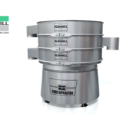~ Comparing project management methodologies ~
To remain competitive, developers and project managers often focus on three priorities — deliver projects on schedule, stick to the budget and align activities with business goals. How project managers achieve this depends on the methodology they follow. Here Louise Cermak, principal consultant at Catapult, compares two common methodologies — Agile and Waterfall.
Both Agile and Waterfall project management frameworks offer their own advantages and disadvantages, and understanding these can help teams select the best fit for the project.
What is Waterfall?
The Waterfall model is a traditional, linear approach to project management. It divides the project lifecycle into distinct phases that must be completed sequentially, from requirements gathering through to testing and maintenance. Each phase typically requires sign-off before progressing to the next, making any changes, such as incorporating adjustments from the client, after a phase is completed difficult and costly.
When following Waterfall practices, a business analyst will document the initial requirements before developers sequentially progress through phases such as design, implementation and testing. Once every stage is complete, the product is deployed and developers will provide ongoing support and maintenance.
Waterfall pros and cons
Waterfall is a structured approach to software development that provides a detailed project plan, making it easy to track progress and manage deadlines. Requirements are gathered upfront, so there is little ambiguity around the project’s goals. Working in sequential phases ensures that project deliverables are well-defined and developers can mitigate risk with thorough upfront planning.
However, working to such a structured development methodology can be inflexible. When following a Waterfall approach, testing occurs after development, so any critical issues won’t be discovered until late in the development process. These late changes can be costly and difficult to implement, making it difficult for teams to adapt to changing customer requirements, which can result in the final product not meeting user needs.
What is Agile?
Agile is a more flexible, iterative approach to software development. It emphasises collaboration, continuous feedback and the ability to adapt to changing requirements throughout the project lifecycle.
When following Agile principles, software developers break down projects into small, manageable tasks. Known as stories, these are planned into sprints. Developers can deploy each sprint as it is ready, allowing for continuous feedback loops from stakeholders and team members. They can then use real time feedback to adjust the product, ensuring continuous improvement. Agile product management requires product owners to act as the key stakeholder representative, ensuring the product meets requirements.

Agile pros and cons
When following Agile software development methodologies, the iterative approach allows development teams to adapt to changing requirements and incorporate feedback at every stage of development. Breaking down the project into stages means that the developer delivers value sooner, providing functional products early and updating them often. Agile is also about collaboration, enabling cross-functional teams to work in a motivated and empowering environment.
However, making continuous improvements relies on continuous engagement from stakeholders, which can be time-consuming. Trying to incorporate all the changes suggested in feedback can blur requirements, meaning there may be no clearly defined end goal. While this iterative approach means there are more deployments over time, it can lead to delays and challenges with predicting accurate timelines and costs.
Comparing Agile and Waterfall
Factors such as project size, complexity, stakeholder requirements and team expertise will often influence which project management methodology will work best.
For example, you might want to consider Waterfall when working on projects with well-defined requirements, minimal changes and where the requirements are known, clear and fixed. For example, when a construction firm is building a bridge, it may use a Waterfall approach because it already knows what the end result should look like.
An Agile method on the other hand, is best suited to projects with dynamic requirements and for delivering IT changes. This is particularly beneficial in software development, where frequent feedback and flexibility can help developers adapt to changing customer needs and technologies.
By carefully considering project needs and team capabilities, organisations can choose the most suitable methodology, ensuring a balanced approach to achieving their project goals. Understanding the strengths and limitations of methodologies like Agile and Waterfall ensures that businesses choose the best project management method for their application.
Need help deciding on which project management approach would work best during your next software development project? Speak to Catapult’s software engineers for expert advice.







